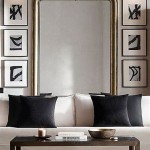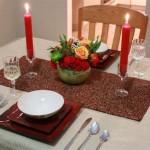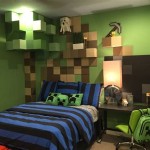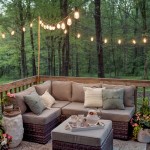What Is The Decorative Trim On Walls Called In England?
Decorative trim on walls, known as
moulding
in England, is a versatile architectural element that adds character, elegance, and visual interest to any space. This timeless design feature can range from simple and understated to elaborate and ornate, depending on the architectural style and desired aesthetic. Understanding the different types of mouldings and their specific names can be essential for homeowners and designers looking to enhance their spaces with this classic detail. This article explores the various types of decorative trim found on walls in England and delves into the specific terms used to identify them.Types of Mouldings
Mouldings are generally categorized based on their shape, size, and purpose. Understanding these classifications helps identify the specific type of trim used in a particular setting. Common types of mouldings found in English homes include:
1. Cornice
Cornice is a decorative moulding, often elaborate, that runs along the top of a wall where it meets the ceiling. Cornices are typically found in rooms with high ceilings, serving to visually break up the space and create a sense of grandeur. They can be made from various materials, including plaster, wood, and even plastic.
2. Picture Rail
Picture rail, as the name suggests, is a moulding designed to support picture hooks or picture wire, allowing homeowners to easily hang artwork and other decorative items. It is typically positioned below the cornice, although it can also be placed lower on the wall depending on the desired aesthetic.
3. Dado Rail
Dado rail, also known as a chair rail, is a decorative moulding that runs horizontally across the wall, typically about halfway up. It is designed to protect the lower portion of the wall from scuffs and marks, particularly from furniture. Dado rails can be made of various materials, including wood, plaster, and metal.
4. Skirting Board
Skirting board, or baseboard in American English, is a trim that covers the transition between the floor and the wall. It is typically placed at the base of the wall and serves both an aesthetic and functional purpose. Skirting boards can be made from various materials including wood, plaster, and plastic and can range in design from simple to elaborate.
5. Architrave
Architrave is a moulding that frames a doorway or window opening. It serves to create a decorative frame around the opening, enhancing its visual appeal and creating a sense of distinction. Architraves can be made from various materials, including wood, plaster, and stone.
6. Coving
Coving is a curved moulding that joins the ceiling to the wall, creating a smooth transition between the two surfaces. Coving is often used to add a touch of elegance to a room and can be made from various materials, including plaster, wood, and polyurethane.
Materials and Style
Beyond shape and purpose, mouldings can also be classified based on their material and style. Choosing the right material and style for your specific needs can significantly impact the overall aesthetic of a room. Here are some common materials and styles:
Materials
Mouldings are made from a wide range of materials, each offering its own unique properties and aesthetic appeal. Some common materials include:
*Wood:
Wood mouldings are a classic choice, offering a natural, warm look and a wide range of finishes. Common wood species used for mouldings include oak, pine, and mahogany. *Plaster:
Plaster mouldings are known for their elegance and intricate detailing. They can be painted or left unfinished to create a subtle yet sophisticated look. *Polyurethane:
Polyurethane mouldings are a more modern option, offering the same look and feel as traditional wood or plaster mouldings but being more affordable and easier to install. *Metal:
Metal mouldings, typically made from brass or aluminum, are less common but can offer a sleek and modern look.Styles
The style of a moulding refers to its overall design and ornamentation. Mouldings are often categorized by their historical style, which can influence both their shape and decorative details. Some common moulding styles include:
*Georgian:
Georgian mouldings are known for their simple, elegant lines and minimal ornamentation. *Victorian:
Victorian mouldings are more elaborate and ornate, often featuring intricate carvings and decorative elements. *Edwardian:
Edwardian mouldings are often characterized by their use of curves, flowing lines, and subtle decorative details. *Modern:
Modern mouldings are typically simple and minimalist, often featuring clean lines and geometric shapes.Benefits of Using Mouldings
Mouldings offer a range of benefits for homeowners and designers, including:
*Enhancing visual appeal:
Mouldings add a touch of elegance and refinement to any room, enhancing its overall visual appeal. *Defining spaces:
Mouldings can be used to visually define different areas or zones within a room, creating a sense of separation and organization. *Adding character:
Mouldings can add character and personality to a room, reflecting the homeowner's taste and style. *Protecting walls:
Mouldings can help protect walls from damage, especially in high-traffic areas.Whether looking to add a touch of historical charm or create a clean, modern aesthetic, decorative trim on walls, or mouldings, offers a versatile and timeless solution for enhancing any space.

Diy Guide To Decorative Mouldings

Diy Guide To Decorative Mouldings

Diy Guide To Decorative Mouldings

What Is Wainscot Molding And Judge S Paneling All Tech Builders

Diy Guide To Decorative Mouldings

The Differences Between Us Names For Interior Decor Mouldings Library Ladder Company

Diy Guide To Decorative Mouldings

Types Of Wall Panelling Which Style You Should Pick And Why Panels World

Mouldings The English Panelling Company

All About Wainscoting The One Thing You Must Never Do Laurel Home







